Dahlia vs. Peony: Which Flower is Right for Your Garden?
Dahlias and peonies are quite different. Dahlia flowers have narrow petals radiating from a center point, while peonies have large, fluffy petals surrounding a center of stamens. Peonies come in various colors, including pink, white, and red; white dahlias have a wider range of colors, including orange, yellow, and purple.
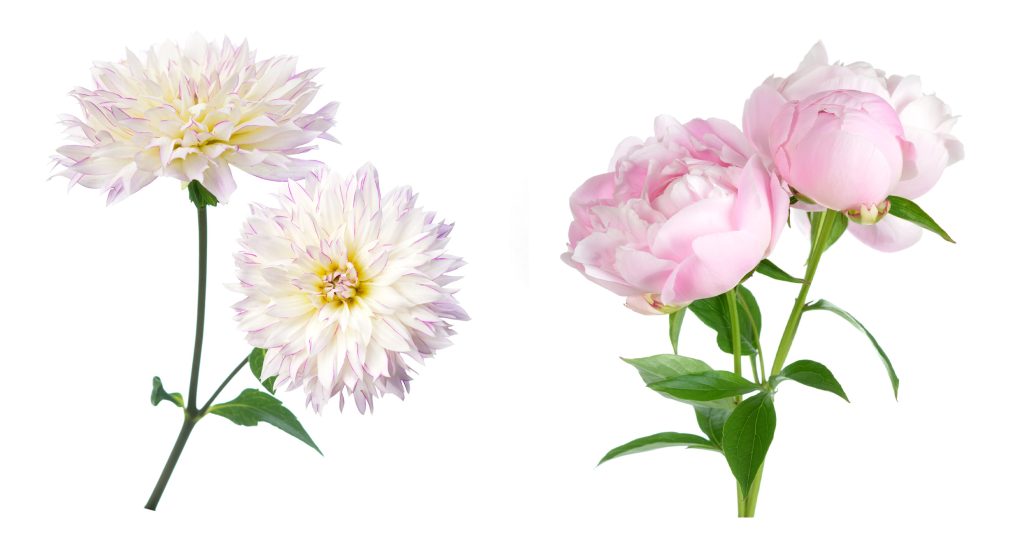
Another key difference between the two flowers is their scent. Peonies are known for their strong, pleasant fragrance, while dahlias are generally considered fragrance-free. Additionally, peonies have a longer vase life than dahlias, which tend to lose their petals quickly.
Table of Contents
Physical Characteristics
Dahlias and peonies are both beautiful flowering plants that have distinct physical characteristics. Dahlias are herbaceous plants that grow from tubers, while peonies are woody shrubs that grow from a crown. Dahlias can grow up to 6 feet tall, while peonies typically grow to 3-4 feet tall.
Dahlia flowers come in various colors, including white, pink, red, orange, yellow, and purple. They have narrow petals that radiate from a center point, giving them a star-like appearance. In contrast, peony flowers have large, rounded petals that give them a full, lush appearance and come in different colors, including white, pink, red, and yellow.
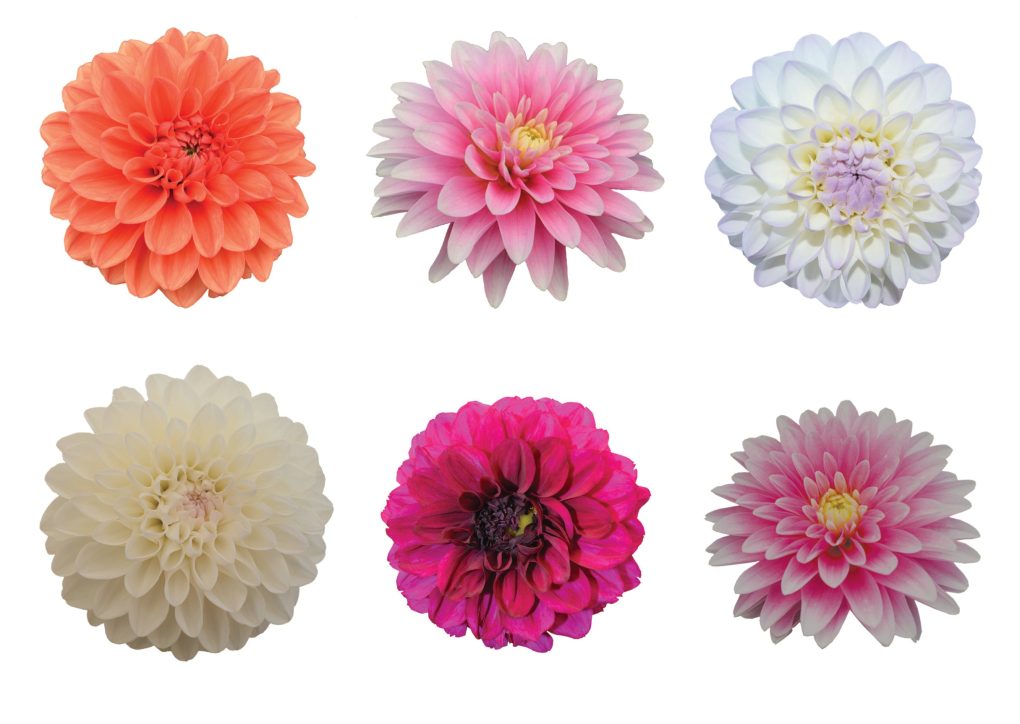
Dahlia flowers are typically smaller than peony flowers, with the largest dahlias measuring up to 12 inches in diameter. Peony flowers, on the other hand, can measure up to 10-12 inches in diameter, making them some of the largest flowers in the plant kingdom.
Another physical characteristic that sets dahlias apart from peonies is their foliage. Dahlia leaves are typically dark green and smooth, while peony leaves are lighter green and have a slightly fuzzy texture.
Varieties
Dahlias and peonies are both beautiful flowers with a wide variety of cultivars. Dahlia cultivars vary greatly in size, shape, and color. There are over 42 recognized species of dahlias, each with its unique characteristics. Some popular dahlia varieties include the decorative dahlias with double flowers with broad petals and the cactus dahlias with pointed tubular petals.
Peonies, conversely, are known for their large, showy flowers with layers of soft, delicate petals. They come in various colors, from pure white to deep burgundy. Some popular peony varieties include the herbaceous peony, a perennial that dies back to the ground each winter, and the tree peony, a woody shrub that produces large, exotic-looking flowers.
Growing Conditions
Dahlias thrive in full sun and well-drained soil. They need at least six hours of exposure to sunlight daily to grow and bloom properly. Dahlias prefer soil rich in organic matter and slightly acidic, with a pH between 6.0 and 7.0. Before planting, it’s a good idea to mix the soil with compost or other organic matter to improve drainage and fertility.
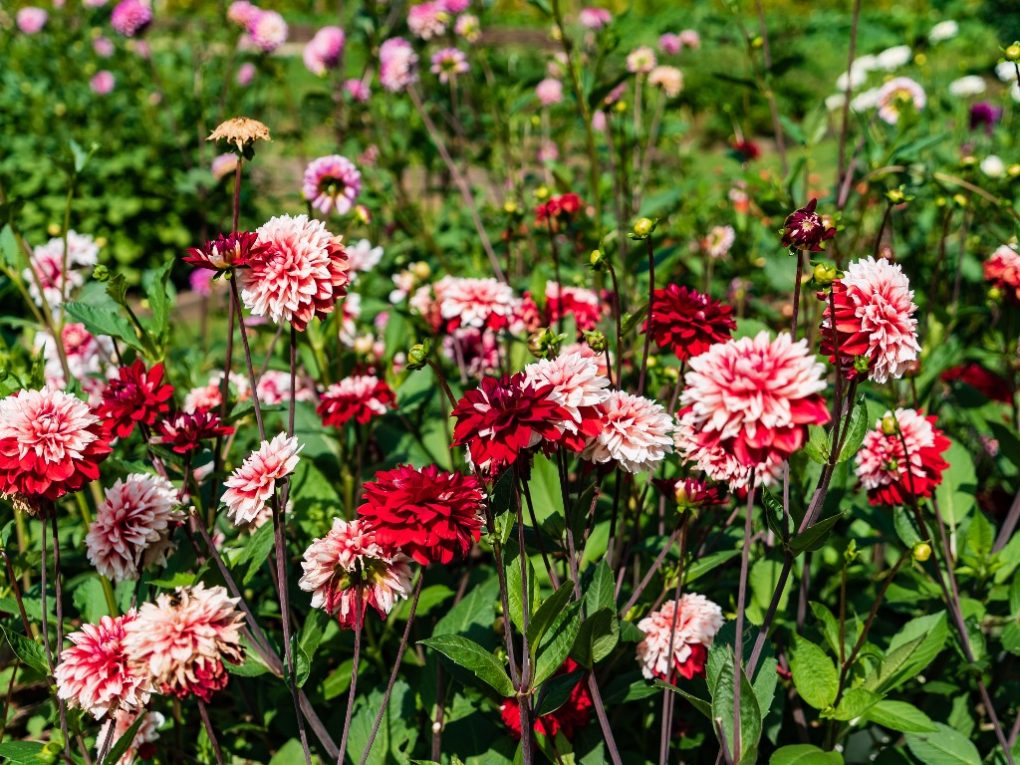
Peonies, on the other hand, prefer partial shade and moist, well-drained soil. They can withstand full sun in cooler climates, but in hot regions, they need shade to prevent the flowers from wilting. Peonies prefer soil rich in organic matter and neutral to slightly alkaline with a pH between 6.5 and 7.5. Before planting, it’s a good idea to amend the soil with compost or other organic matter to improve drainage and fertility.
When it comes to watering, dahlias need regular watering to keep the soil wet but not waterlogged. In hot, dry weather, they may need to be watered daily. Peonies, conversely, are more drought-tolerant and do not need as much water. Overwatering can cause root rot and the plant to die.
Both dahlias and peonies benefit from regular fertilization. Dahlias should be fertilized every 4-6 weeks with a balanced fertilizer high in phosphorus to promote blooming. Peonies should be fertilized in early spring with a balanced fertilizer and again after blooming with a high potassium fertilizer to promote root growth and hardiness.
Care and Maintenance
Dahlia
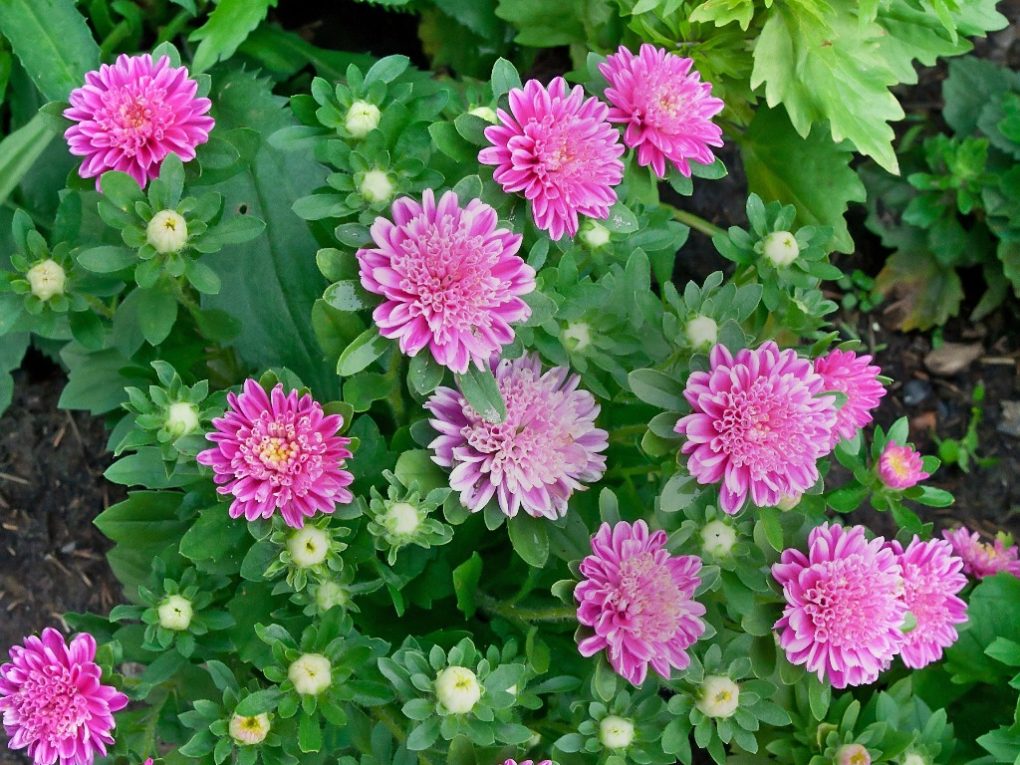
- Though partially shaded areas can also nurture dahlia blooms, plant dahlias in a spot with full sunlight.
- Dahlias prefer rich and well-drained soil. Remember that the soil should be evenly moist, not excessively wet, or the roots may rot.
- Water dahlias regularly, especially during dry spells. Irrigate lightly twice a week, giving enough to moisten the top four to six inches of soil.
- Fertilize dahlias promptly when new growth appears. Use a balanced fertilizer with equal nitrogen, phosphorus, and potassium.
- Pinch off the tops of dahlias once the tubers have sprouted and formed branches. This will promote bushier growth and more flowers.
- Protect dahlias from pests and diseases, such as aphids, spider mites, and powdery mildew, by practicing good garden hygiene and using organic pest control methods if necessary.
Peony
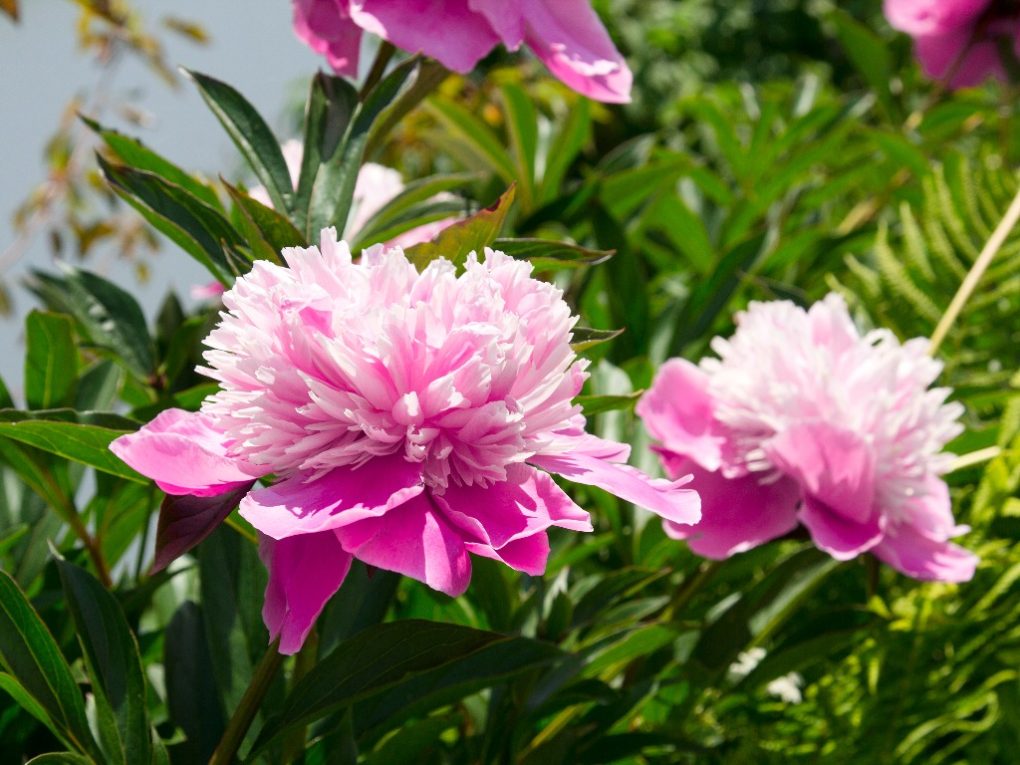
- Plant peonies in well-drained soil that is rich in organic matter. According to the Petal Republic, they prefer slightly acidic soil with a pH between 6.5 and 7.0.
- Peonies need full sun to bloom, but they can tolerate some shade in the afternoon.
- Water peonies as new growth emerge in the spring if there is no rainfall for longer than two weeks. Irrigate lightly twice a week, providing enough to moisten the top four to six inches of soil but not so much that it results in standing water.
- Fertilize peonies in the spring with a balanced fertilizer, such as a 10-10-10 or 5-10-5 formula. Apply it at a rate of 1/2 cup per plant.
- Deadhead peonies after they finish blooming to encourage more blooms the following year. Cut the stem back to just above a leaf node.
- Protect peonies from pests and diseases, such as botrytis blight and nematodes, by practicing good garden hygiene and using organic pest control.
Uses and Symbolism
Dahlias and peonies have been used for various purposes in different cultures, and their symbolism has evolved. Here are some of the most common uses and meanings associated with these flowers:
Dahlias
- Decorative purposes: Dahlias are often used in floral arrangements, bouquets, and centerpieces due to their vibrant colors and long vase life. I used one during my wedding, and it’s the most beautiful thing I’ve seen.
- Birthdays: As the official birth flower for August, dahlias are often given as birthday gifts.
- Weddings: Dahlias are also popular for bouquets and centerpieces due to their elegance and beauty.
- Symbols of inner strength: The inner strength and resilience of the dahlia flower are often associated with the strength and resilience of the human spirit.
- Symbols of change: The dahlia flower is also seen as a symbol of change and transformation, as it blooms in the summer and fades away in the fall.
- Symbols of creativity: The unique and intricate patterns of the dahlia flower are often seen as a symbol of creativity and individuality.
- Symbols of dignity: The dahlia flower is also associated with dignity and grace, as it stands tall and proud in the garden.
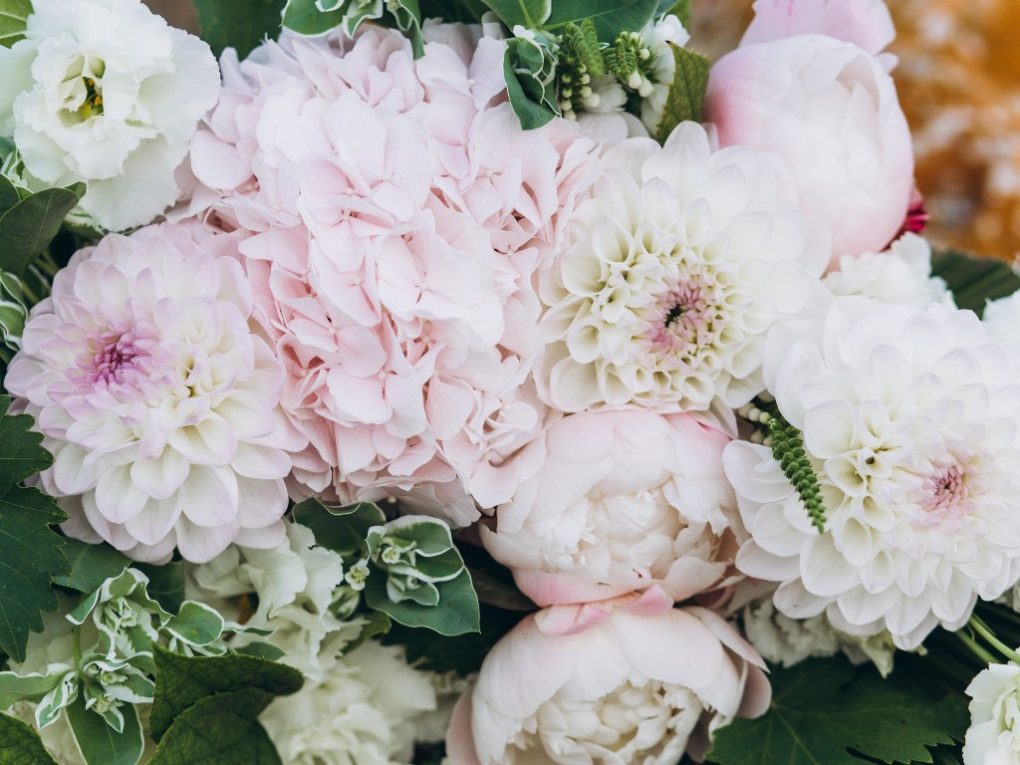
Peonies
- Decorative purposes: Peonies are often used in floral arrangements and bouquets due to their large, lush blooms and sweet fragrance.
- Weddings: Peonies are a popular choice for wedding flowers, symbolizing romance, prosperity, and happy marriage.
- Symbols of good luck: In some cultures, peonies are seen as a symbol of good luck and fortune.
- Symbols of compassion: The soft and delicate petals of the peony flower are often associated with compassion and empathy.
- Symbols of bashfulness: In some cultures, the peony flower is seen as a symbol of shyness and modesty.
- Symbols of honor and respect: The peony flower is also associated with honor and respect and is often used to pay tribute to loved ones who have passed away.
